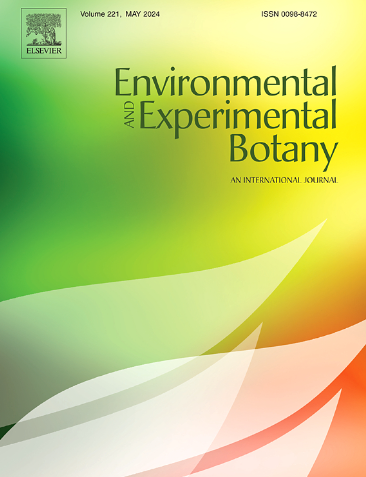Functional lack of SLAC1 modifies guard cell metabolism without impacting photosynthesis under elevated [CO2] and moderated water restriction
IF 4.7
2区 生物学
Q2 ENVIRONMENTAL SCIENCES
引用次数: 0
Abstract
Understanding stomatal response to fluctuations in atmospheric carbon dioxide concentration ([CO2]) and water deficit is important to predict the overall plant performance under these two major environmental stressing factors. In Arabidopsis, slow-type anion channel (SLAC1) plays a central role in the control of stomatal closure with impacts on water use efficiency. Here we investigated whether the stomatal component also plays a central role in limiting photosynthesis in plants showing constitutive higher stomatal conductance (gs), such as slac1 mutants, under high CO2 levels and water restriction. Under these conditions, slac1 plants showed similar photosynthetic performance and growth when compared to wild-type (WT) plants. Furthermore, our results suggest that the constitutive increased stomatal aperture in slac1 plants is associated with a reorganization of primary metabolism in guard cells, in addition to the ion transport impairment, previously observed in slac1 mutants. Altogether, our results indicate that higher gs in slac1 plants are not translated into enhanced photosynthetic performance and growth, independently of CO2 levels and watering conditions.
在CO2升高和水分限制的条件下,SLAC1的功能缺失会改变保护细胞的代谢,但不会影响光合作用
了解气孔对大气二氧化碳浓度([CO2])和水分亏缺波动的反应对于预测植物在这两大环境胁迫因素下的整体表现非常重要。在拟南芥中,慢型阴离子通道(SLAC1)在控制气孔关闭方面发挥着核心作用,并对水分利用效率产生影响。在此,我们研究了在高二氧化碳水平和水分限制条件下,气孔成分是否也在限制植物光合作用方面发挥核心作用,这些植物表现出组成型较高的气孔导度(gs),如 slac1 突变体。在这些条件下,与野生型(WT)植物相比,slac1 植物表现出相似的光合作用性能和生长。此外,我们的研究结果表明,除了之前在 slac1 突变体中观察到的离子运输障碍外,slac1 植物气孔孔径的持续增大还与保卫细胞初级代谢的重组有关。总之,我们的研究结果表明,slac1 植物较高的气孔开度并没有转化为光合作用性能和生长的增强,这与二氧化碳水平和浇水条件无关。
本文章由计算机程序翻译,如有差异,请以英文原文为准。
求助全文
约1分钟内获得全文
求助全文
来源期刊

Environmental and Experimental Botany
环境科学-环境科学
CiteScore
9.30
自引率
5.30%
发文量
342
审稿时长
26 days
期刊介绍:
Environmental and Experimental Botany (EEB) publishes research papers on the physical, chemical, biological, molecular mechanisms and processes involved in the responses of plants to their environment.
In addition to research papers, the journal includes review articles. Submission is in agreement with the Editors-in-Chief.
The Journal also publishes special issues which are built by invited guest editors and are related to the main themes of EEB.
The areas covered by the Journal include:
(1) Responses of plants to heavy metals and pollutants
(2) Plant/water interactions (salinity, drought, flooding)
(3) Responses of plants to radiations ranging from UV-B to infrared
(4) Plant/atmosphere relations (ozone, CO2 , temperature)
(5) Global change impacts on plant ecophysiology
(6) Biotic interactions involving environmental factors.
 求助内容:
求助内容: 应助结果提醒方式:
应助结果提醒方式:


